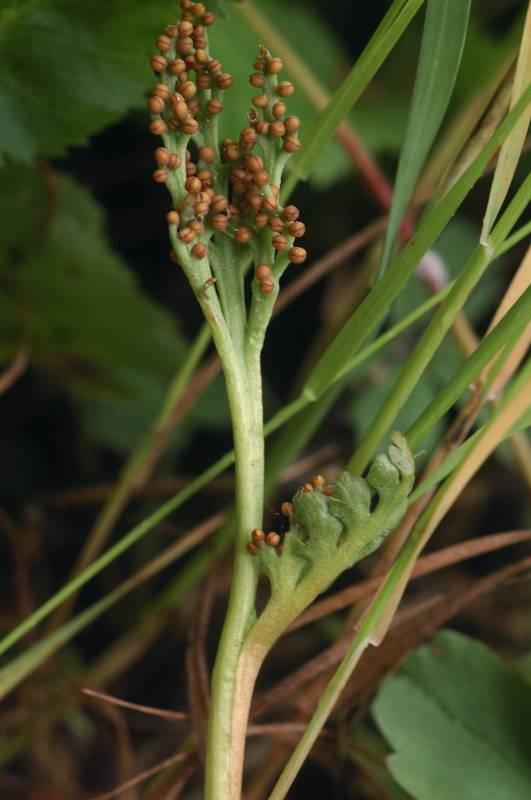Botrychium paradoxum
Botrychium pedunculosum
paradox moonwort, two-spiked moonwort
stalked moonwort
Trophophore blade dull green and leathery, ovate-oblong to deltate-oblong, 1-pinnate, up to 4.5 cm long and 2 cm broad, stalk 8-26 mm; trophophore pinnae in up to 5 pairs, slightly ascending, space between 1st and 2nd pinnae equal to or less than the spaces between 2nd and 3rd pairs, basal pinna pair approximately same size and cutting as adjacent pair, ovate-rhombic to spatulate, lobed to apex, margin entire to unevenly lobed, apex rounded to acute, venation pinnate; sporophores 1-3-pinnate, 2-4 times the length of the trophophore.
Sporangium nearly completely exposed, borne in 2 rows on pinnate sporophore branches; spore surfaces wrinkled and somewhat warty.
Botrychium paradoxum
Botrychium pedunculosum
- Local floras:
BC,
CA,
OR,
WA
- Local Web sites:
CalFlora,
CalPhotos,
Flora NW,
PNW Herbaria
WildflowerSearch
iNaturalist (observations)
USDA Plants Database
- LBJ Wildflower Center
- SEINet
- Plants of the World Online
- Encyclopedia of Life
- Wikipedia
- Google Image Search
- Local floras:
BC,
OR,
WA
- Local Web sites:
Flora NW,
PNW Herbaria
WildflowerSearch
iNaturalist (observations)
USDA Plants Database
- LBJ Wildflower Center
- SEINet
- Plants of the World Online
- Encyclopedia of Life
- Wikipedia
- Google Image Search



